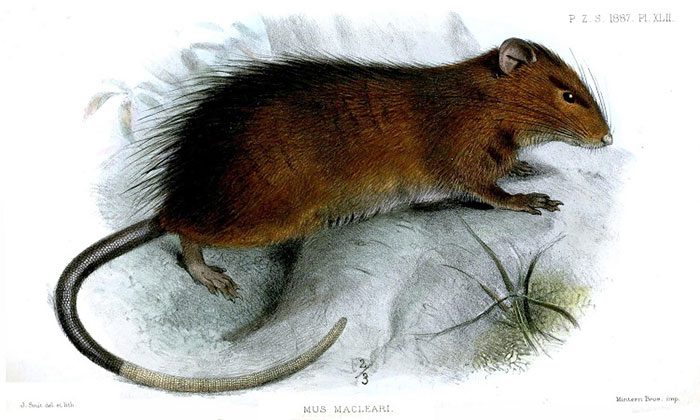Danish scientists may bring back the 45 cm long rat that went extinct 120 years ago using CRISPR technology.
The research team, led by evolutionary geneticist Tom Gilbert from the University of Copenhagen, Denmark, hopes to resurrect the extinct rat after collecting nearly all of the genetic material from the Christmas Island rat. They found that it shares about 95% of its genes with the living Norway rat. The researchers announced their findings on March 9 in the journal Current Biology.

Illustration of the Christmas Island rat. (Photo: Sci Tech Daily)
Christmas Island rat (Rattus macleari), also known as Maclear’s rat, is native to Australia and can grow up to 45 cm from head to tail. It was wiped out about 120 years ago during a mass extinction event between 1899 and 1908 when diseases brought by European ships spread throughout the area. The Christmas Island rat has large, strong teeth capable of eating red crabs found on the island. It also has long, thick fur and a black whisker that measures about 7.5 cm.
Gilbert and his colleagues compared the genome of the extinct rat with that of the Norway rat. They identified the mismatched gene segments and then used CRISPR technology to edit the DNA of a living organism to match that of the extinct species. Although this method is almost successful, some important genes are still missing. This means that the resurrected Christmas Island rat may not have the same olfactory capabilities as its ancestors.
“With current technology, it is not possible to restore a complete DNA sequence, so we cannot create a perfect replica of the Christmas Island rat. It will be a form of hybrid species,” Gilbert stated.
Gilbert plans to edit the genome of black rats to resemble that of Norway rats before resurrecting the Christmas Island rat. Scientists believe that Norway rats and Christmas Island rats have a similar evolutionary divergence as modern elephants and woolly mammoths. If successful, this experiment could help bring many ancient animals back to life.





















































